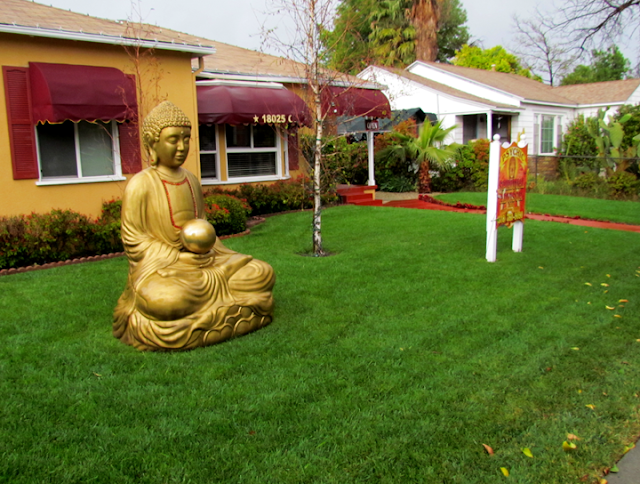I spent some time recently up at the visitor center for the Los Angeles Church
of the Latter Day Saints located on the grounds of the Mormon Temple.
Without a doubt, the site is a sacred LA precinct capable of
communicating the austerity that the faith embodies as the religion of the Americas.
Located in the heart of the west side of LA, the temple and
grounds stand out distinctly from the steel and glass skyscrapers that ring
this sacred space. Pulling in and
parking I was surprised when stepping out of the car to be immediately
overwhelmed in the sereneness of the grounds.
What struck me first was the immaculate grooming of the
grounds and the sense of silence that the hillside temple had upon it, especially
with Santa Monica Boulevard
right below full of cars at rush hour.
From the street, the Temple
looks large but not so massive that it overwhelms the onlooker. It's not until you get next to the temple and
away from the concrete and steel buildings that you can feel the austerity of
the structure in the surrounding open space.
Standing next to the temple, it soars out of the sea of green into the
blue sky above which holds aloft the golden angel Moroni.
Immediately behind the temple is the Visitor Center. Renovated and re-opened in 2010, the Visitor Center contains numerous exhibits and
interactive displays about The Church of Jesus Christ of Latter-day Saints
including exhibits on the history of Jesus Christ, the charitable works of the
church, and the history of the temple.
Also in the facility is an area for genealogical research as it houses
the popular Los Angeles Family History Library.
Probably one of the most impressive elements of the visitor
center is the reproduction of Danish-Icelandic sculptor Berel Thorvaldsen's Christus
statue (the original being in the Church
of Our Lady in Copenhagen, the National Cathedral of Denmark).
Standing in a serene room with a pastel sunrise, the statue
is the focal point of an audio component that serves as an introduction to the
center, the Temple,
and the LDS style of Christianity given the context of the setting. The cost for the presentation, our gracious
and kind host advised, was the acceptance of a post paid interest card to learn
more about the LDS church.
The temple itself is locked up tight and not accessible to
visitors, at least without invitation.
From the displays, the understanding I took away was that the interior
of the temple hasn't been open to the public since its construction at which
time it was opened to Angelenos to see the craftsmanship and to get an idea of
the LDS practice.
Overall, the site communicates well the sanctity of the
temple and the sacred space around it.
Even as a non Mormon, I could feel the solemnity of the religion and
after visiting it gave me a new perspective on the tradition and the reverence
it commands, even in the silence of the pastoral grounds.
I would definitely recommend spending some time to visit the
LDS Templein Los Angeles. When you do, plan to spend at least a hour in
the visitors center and grounds to take in the sacred space in totality.




















